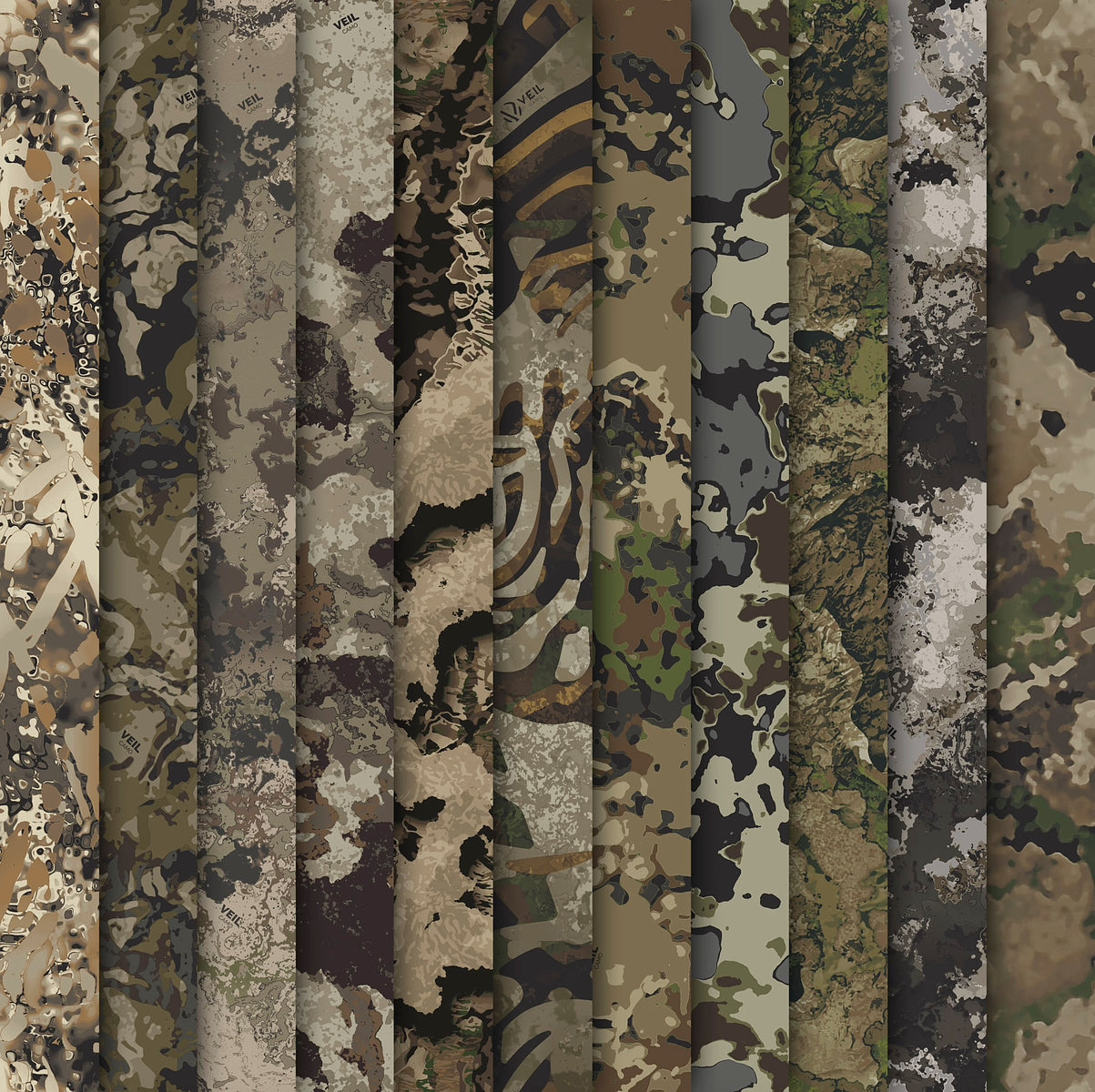Picking the Perfect Camo for your Hunt

Picking the Perfect Camo for your Hunt
In the animal kingdom, camouflage ranges from all species. Mammals, reptiles, insects’ predators and prey. No matter where these species live, their camouflage usually represents not only the surroundings they live in, but also how it works in their favor. The shapes and colors that animals use to hide are widespread. From the horizontal black stripes of a tiger to the small white spots on a fawn. Depending on what animal you are pursuing on your next hunt, your success can depend on your camo’s shapes and color.
Shapes
Camo uses multiple different aspects to break you apart and seemingly blend you into the environment. First let's focus on the shapes. Depending on the type of prey you are focusing on, the shapes of the camo pattern need to be different. The Cervidae family or deer family, have much different vision than let’s say turkey or waterfowl. The shapes in a camo pattern used for deer hunting, should be large and open. Using large macro shapes and shades will help break up your silhouette whether hunting from the ground or up in a tree. Some good examples of patterns like this are Veil Whitetail, Veil West River and Veil Cervidae. Turkeys and waterfowl see much better in detail, so the pattern schemes and breakup should have large scale shapes down to small details.
Color
The correct color of camouflage has a huge impact on its effectiveness. Animals don’t see color the way humans do. A camo pattern may look good on the shelf to our eyes, but to a deer or turkey it might be extremely blatant and obvious. Deer has a form of colorblindness called Protanopia. This means they are red and green colorblind. However, their eyes are more responsive to colors of blue and yellow. Turkeys have seven types of photoreceptors. This allows them to see well in the UV spectrum and colors we simply cannot see. When choosing the colors in a pattern for deer or turkeys it’s important to match the surroundings you will be hunting in, for example the gray of a stand maple tree or the undergrowth greens of spring in the turkey woods.
Conclusion
There are many options and brands of camouflage out there, just as there are many kinds of animals with different colors and patterns. However, if you observe, each of them is unique to the environments that they live in. Next time you are picking out your newest camo clothing, try to think about the specific species you are pursuing, and where or the environment you’ll be hiding in.

